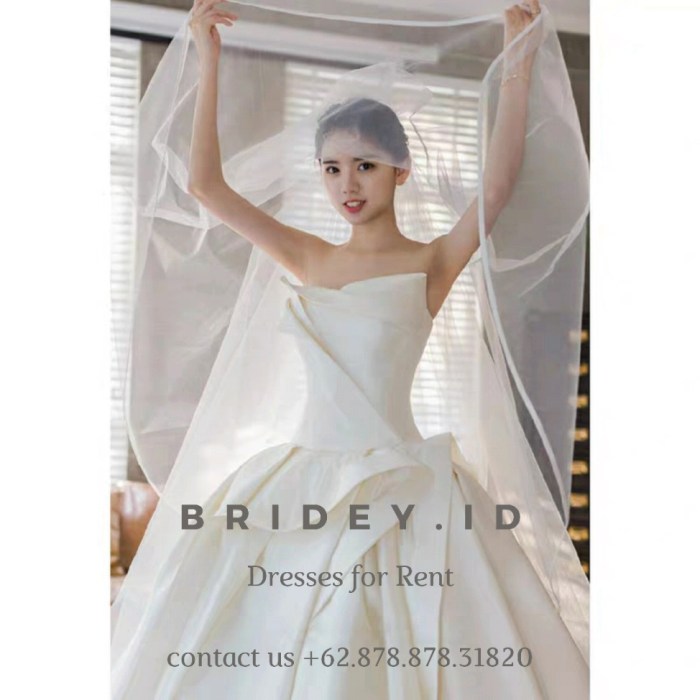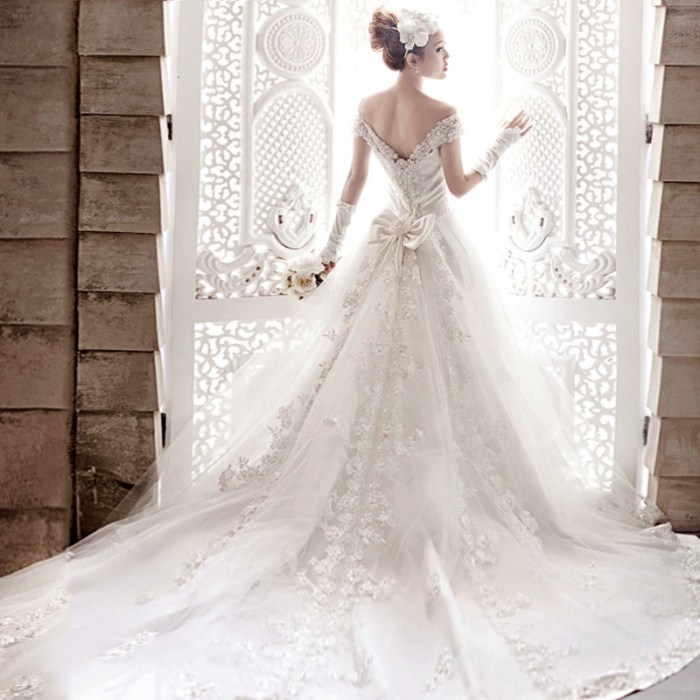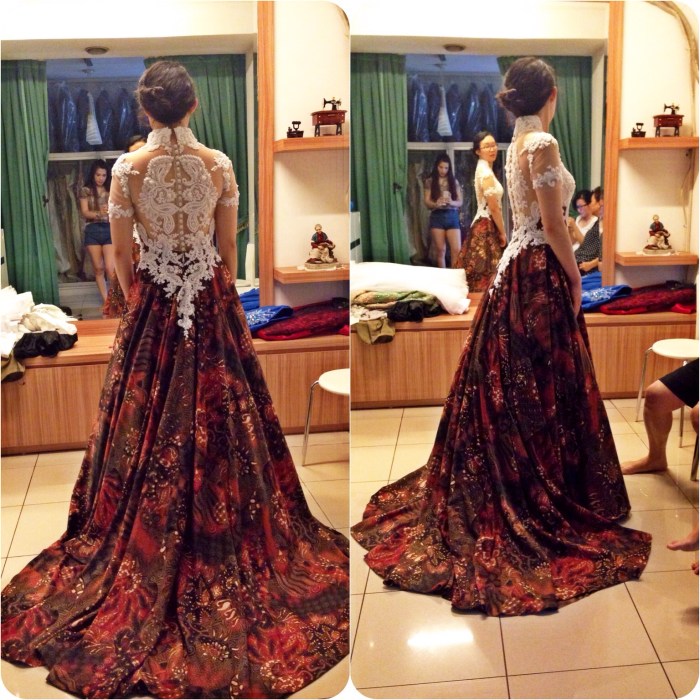Garment District Wedding Dress Shopping: A Comprehensive Guide
Garment district wedding dresses – The Garment District in New York City offers a unique and often cost-effective alternative to traditional bridal salons. This bustling hub of fashion provides a diverse selection of wedding dresses, from classic styles to avant-garde designs, all at a range of price points. This guide explores the intricacies of finding your dream wedding dress within this vibrant district.
Garment District Wedding Dress Shopping Experience

Source: bridestory.com
Shopping for a wedding dress in the Garment District is a far cry from the pampered experience of a traditional bridal boutique. The atmosphere is fast-paced and business-oriented, often requiring more self-direction and research. You’ll encounter a wide array of styles, from simple A-line gowns to elaborate ballgowns, and price ranges that can vary significantly depending on fabric, embellishments, and the designer (or lack thereof).
Unlike the curated selections of bridal salons, the Garment District offers a more hands-on approach. You’ll likely visit multiple showrooms or ateliers, potentially navigating through less-polished spaces compared to the polished settings of traditional shops. This can be overwhelming for some, but rewarding for those who enjoy a more independent and customizable experience.
Advantages of Buying in the Garment District:
- Wider selection and unique styles
- Potentially significant cost savings
- Customization options and bespoke designs
- Direct interaction with designers and manufacturers
Disadvantages of Buying in the Garment District:
- Requires more research and legwork
- Less personalized service compared to bridal salons
- Potential for longer lead times
- Need for careful vetting of vendors
Types of Wedding Dresses Found in the Garment District, Garment district wedding dresses
The Garment District offers a vast spectrum of wedding dress styles. From timeless classics to modern interpretations, the options are nearly limitless. Common styles include A-line, ballgown, mermaid, sheath, and empire waist gowns. Unique design options, such as custom embellishments, unconventional fabrics, and personalized alterations, are readily available.
Fabric choices are equally diverse, ranging from luxurious silks and satins to delicate laces and intricate beading. Many vendors offer a wide selection of fabrics, allowing brides to tailor their dress to their preferences and budget.
| Dress Style | Description | Suitable Body Types | Fabric Suggestions |
|---|---|---|---|
| A-Line | Fitted at the bodice, flaring out from the waist. | Most body types | Lace, chiffon, satin |
| Ballgown | Fitted bodice with a full, voluminous skirt. | Hourglass, pear, inverted triangle | Tulle, organza, silk |
| Mermaid | Fitted through the hips and flares out at the knees. | Hourglass, athletic | Lace, satin, crepe |
| Sheath | Straight, form-fitting silhouette. | Slender, athletic | Crepe, jersey, silk |
Cost and Value of Garment District Wedding Dresses

Source: jagarasa.id
The price range for wedding dresses in the Garment District is incredibly broad, ranging from a few hundred dollars for simpler styles to tens of thousands for high-end custom designs. Compared to traditional bridal shops, the Garment District often offers comparable quality at a lower price point, particularly when considering customization options.
The value proposition lies not only in potential cost savings but also in the ability to personalize your dress. Custom alterations and unique design elements can result in a truly one-of-a-kind gown. This personalized approach adds significant value, making the dress a unique reflection of the bride’s style and personality.
Sample Budget Breakdown:
- Dress: $1,500 – $5,000
- Alterations: $300 – $800
- Accessories (veil, shoes, jewelry): $300 – $1,000
The Process of Buying a Wedding Dress in the Garment District
Buying a wedding dress in the Garment District requires a proactive and organized approach. Begin by setting a realistic budget and timeline. Research potential vendors and schedule appointments well in advance, especially if you have specific design requirements or need alterations.
When visiting showrooms, bring inspiration photos, measurements, and a trusted friend or family member for a second opinion. Clearly communicate your vision, budget, and timeline to the vendors. Don’t hesitate to ask questions about fabrics, construction, and turnaround times.
Finding the perfect wedding dress in the Garment District can be an exciting, albeit overwhelming, experience. The sheer variety of styles available often leads brides to consider broader wedding attire trends, like those outlined in this helpful guide on dresses to wear to a western wedding , for inspiration. Ultimately, however, the best dress will depend on the bride’s personal style and the overall wedding aesthetic, something easily achievable with the right resources within the Garment District.
Essential Items to Bring to Appointments:
- Inspiration photos
- Measurements
- Budget information
- Comfortable undergarments
Alterations and Customization of Garment District Wedding Dresses

Source: bridestory.com
Alterations and customization are integral aspects of the Garment District wedding dress shopping experience. Many vendors offer in-house alteration services, or they can refer you to reputable seamstresses in the area. Common alterations include hemming, taking in seams, adding sleeves, or adjusting the neckline.
Working with a seamstress requires clear communication and a collaborative approach. Discuss your vision, provide detailed instructions, and schedule multiple fittings to ensure a perfect fit.
Questions to Ask Potential Seamstresses:
- Experience with wedding dress alterations
- Turnaround time
- Pricing structure
- Portfolio or references
Visual Representation of Garment District Wedding Dresses
The Garment District offers a diverse range of wedding dress styles. Here are descriptions of three common styles:
Classic A-Line Dress: Imagine a timeless silhouette, gracefully flowing from a fitted bodice to a gently flared skirt. The fabric might be a luxurious satin or a delicate lace, perhaps adorned with subtle beading or embroidery along the neckline and waist. The overall aesthetic is elegant, romantic, and effortlessly chic.
Modern Sheath Dress: This style showcases a sleek, form-fitting silhouette, highlighting the bride’s figure. The fabric might be a structured crepe or a flowing jersey, potentially featuring clean lines and minimal embellishments. The overall aesthetic is sophisticated, modern, and understated.
Bohemian Lace Dress: This dress exudes a free-spirited, romantic vibe. The fabric is likely a delicate lace, perhaps with floral patterns or intricate details. The silhouette might be A-line or flowing, often featuring long sleeves or a flowing back. Embellishments could include delicate beading or embroidery. The overall aesthetic is whimsical, romantic, and effortlessly bohemian.
Question Bank: Garment District Wedding Dresses
How do I find reputable vendors in the Garment District?
Start by researching online reviews and seeking recommendations from other brides. Visiting the district and speaking with several vendors in person is crucial to assessing their expertise and professionalism.
What should I bring to my appointments?
Bring inspiration photos, accurate measurements, your budget, and a list of must-have features and preferred styles. Comfortable shoes are also essential!
What if I need alterations? How do I find a seamstress?
Many Garment District shops offer alteration services. Alternatively, seek recommendations for reputable seamstresses from vendors or online. Be sure to get multiple quotes and clearly discuss your expectations.
How much time should I allocate for the entire process?
Allow ample time—at least 6-8 months—for dress selection, alterations, and potential unforeseen delays. Starting early minimizes stress and ensures a smooth process.
